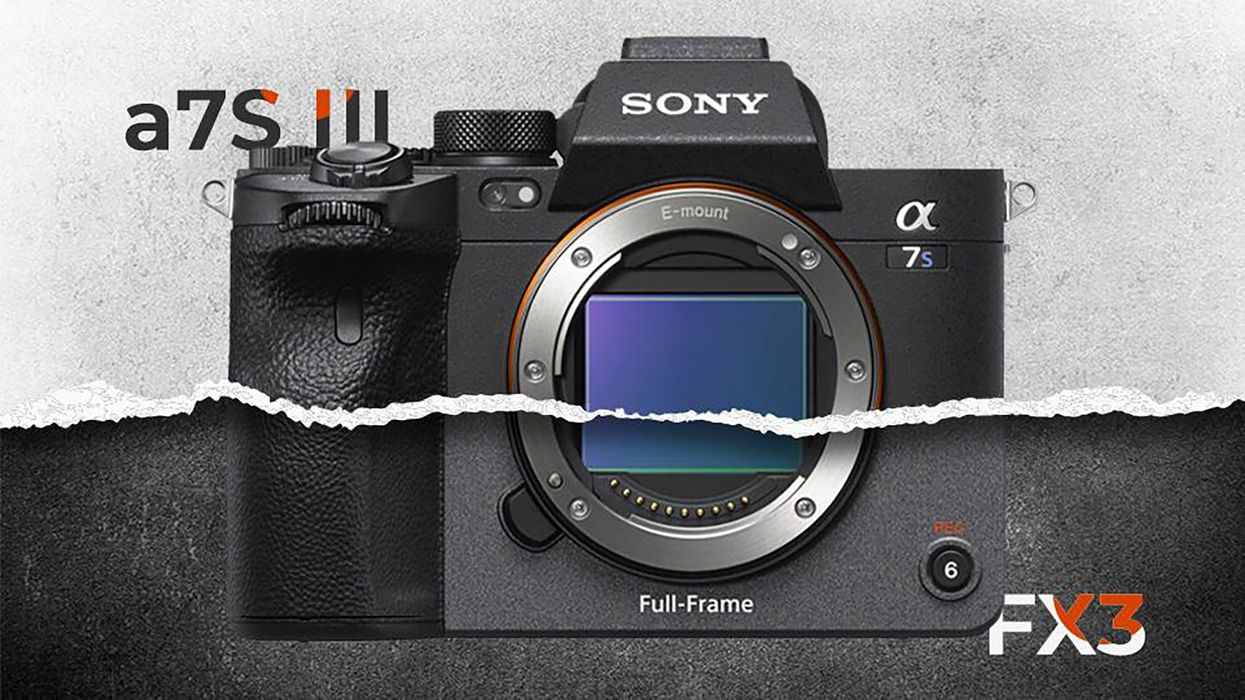Sony a7S III vs FX3: Which Compact Cinema Option Is Best for You?
Borrowing bits from both the a7 series and the more traditional cinema cameras, the FX3 led many to ask the question: "Should I get the a7S III or the FX3?"

After a lengthy wait, Sony unveiled the a7S III, satiating years of desire for an upgraded king of mirrorless video. The release itself wasn’t so much of a shocker, even if the specs were top-notch—perhaps even beyond expectations. However, the surprise came when Sony lifted the curtain on the FX3 as part of the Cinema Line just a short time after.
The question of every filmmaker's mind has been, "Which one do I get?"
Top-Notch Specs for Both
Before we even get into which camera you should pick, we should start with why you should get either.
The answer is image quality.

The A7S III and FX3 share many specs and features:
- 12MP Full-Frame BSI CMOS Sensor
- Internal UHD 4K up to 120p in 10-bit 4:2:2
- XAVC S-I and XAVC HS compression options
- Raw 16-bit Video Output via Full-Size HDMI
- Raw Video Recorded at 4.2K 60p using Atomos Ninja V/V+
- Internal Full HD up to 240p
- Advanced phase-detect autofocus system
- 15 Stops Dynamic Range
- ISO Range 80-102,400
- S-Log3, S-Cinetone, and Other Picture Profiles
If you haven’t seen the cameras and had to choose solely on the spec sheet, you would likely be wondering if they were the same camera. That sensor does a lot of heavy lifting. When you look at the two cameras, you will see that the difference comes in ergonomics and design.
Physical Design: Very Different Mindsets
Obviously, there are some huge differences when it comes to physical design. A fun note is that the cameras have different finishes.
The a7S III is a classic black mirrorless camera, while the FX3 takes on the dark gray persona of the Cinema Line. A very small thing, I know, but it does clearly show the target audience for each camera.
More similarities between these two cameras are manifested in them having the same ports. Even the locations of these are quite similar.

Final Thoughts
Both cameras will serve you well. The pure quality of these cameras is exactly the same in every way―you will be making your decision based on ergonomics and features. Anyone switching between stills and video should go with the a7S III. It also might make sense if you already are accustomed to the a7 form factor and are comfortable with it.
For people buying a camera specifically to shoot video, you will be much better served by the FX3.
Want to dig a little deeper into the specs of both cameras and how they stack up? Check out the full breakdown at B&H.
Here at No Film School, we're always excited to learn about how you use your gear. Let us know in the comments which camera you plan to get and what you'll end up using it for!
Check out weekly specials, deals, and rebates: Pro Video Gear, Pro Audio Gear, Lighting
Source: B&H











